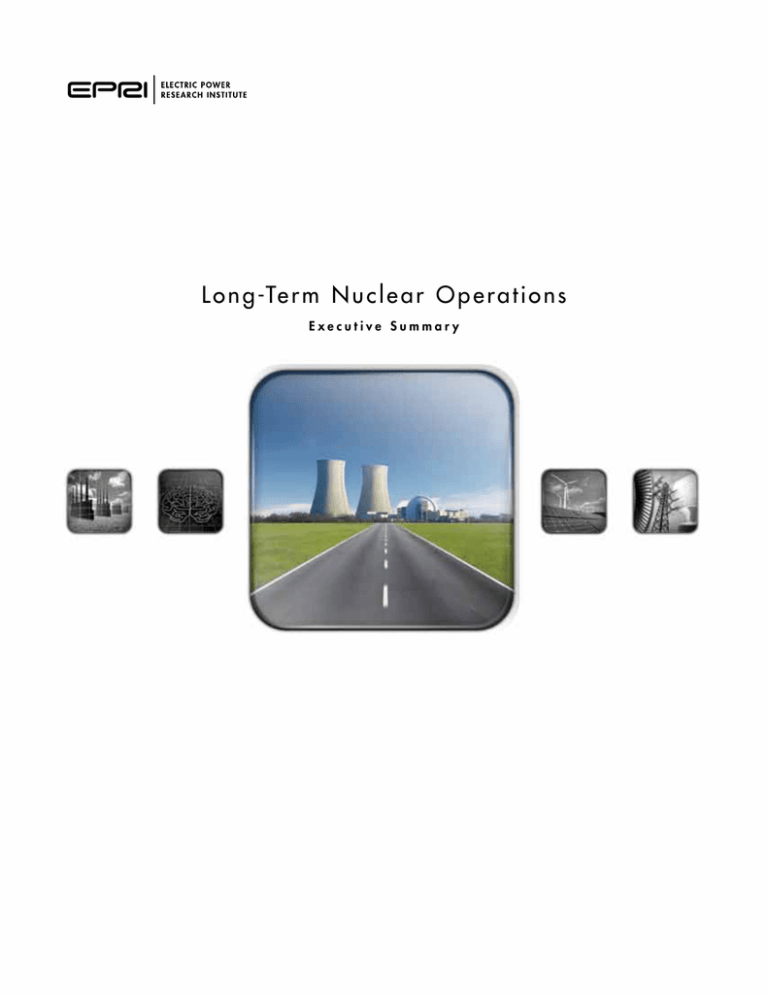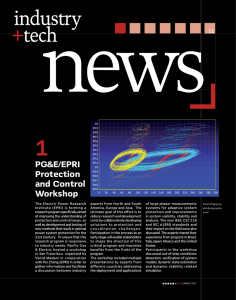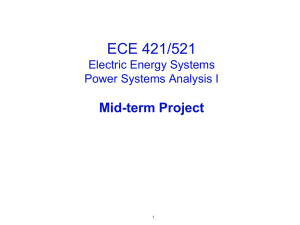
L o n g -Te r m N u c l e a r O p e r a t i o n s
Executive Summary
Long-Term Nuclear
Operations
What is a feasible life span for
a nuclear plant?
“I would say 80 years, without
question. And I think if we do
the new ones right, a 100-year
lifetime is easily achievable.”
– Gary Gates, CEO,
Omaha Public Power District
E x e c u ti v e
s u m m a r y
Major economic, environmental, and operational issues
drive the need for long-term operations
Nuclear power’s high capacity factors and low operating costs make it economically competitive and a cornerstone
of electric system reliability. Nuclear power’s zero-emissions profile also makes it an attractive option for addressing
growing concerns about climate and the costs of meeting CO2 emission targets.
These and other attributes can potentially justify the continued operation of existing nuclear plants beyond 60 or 80
years, even when major plant components must be upgraded. The decision to extend nuclear plant life, however,
involves many interrelated technical, economic, regulatory, and public policy issues.
The industry needs workhorse baseload plants
The existing nuclear fleet provides reliable, affordable
baseload power — a foundation for economic growth
and the financial health of utilities. With global electricity demand expected to rise more than 85% by 2035
(Energy Information Administration), the industry must
maintain the availability of “workhorse” nuclear plants.
Extending the life of existing plants secures a low-cost
generation asset, strengthens the grid, and supports the
introduction of renewable resources.
Nuclear plants can help strengthen the balance sheet
In most cases, nuclear plant owners have paid off the
debt associated with capital investment in existing plants.
Continued operation of these plants enables owners and
their customers to derive even greater value by avoiding
significant capital outlays for new generation.
Long-term operation keeps options open
Power generation requires high-dollar investments over
long planning and development horizons. The availability of multiple options increases strategic flexibility
and reduces risks. Pursuing long-term operation enables
generation fleet owners to manage assets more effectively
in meeting demand while complying with economic,
financial, regulatory, and technical requirements. Also,
because generation options must compete with one
another, the consumer ultimately benefits.
Technical requirements constitute a “heavy lift”
License renewal in the United States, periodic safety
reviews in many countries, and other formal life extension
processes prompt tremendous technical work to prepare
for the regulatory scrutiny associated with long-term
operations. By identifying and addressing the range of
technical issues, nuclear plant owners and their corresponding regulators can engage in more timely and fruitful discussions of potential barriers to extended operation.
Curb emissions with proven technology
National and international targets to reduce CO2 emissions will drive utilities to build low-emission technologies, requiring substantial capital expenditures and time.
Extending the life of nuclear plants during and beyond
the transition to low-emission technologies can deliver
significant carbon reductions, reinforcing nuclear’s leading position as a source of zero-carbon electricity.
L on g - T e r m
N u c lea r
O p e r ation s
Research and development
can reduce uncertainty
related to long-term
operations
Research and development can effectively inform decision making regarding long-term operations. Replacing
reactor internals, for example, might be easier to justify if
confidence is high that the plant will operate for another
30 rather than 10 years. To make this decision, plant
owners and operators require comprehensive,
objective technical information.
Better understanding of aging mechanisms will add
certainty to extended-life decisions
The plant’s physical condition provides the most tangible
challenge to long-term operations. A better understanding of physical degradation mechanisms will enable
plant owners to monitor the condition of a given component, determine when intervention might be necessary,
and develop and implement any necessary mitigation.
A life-cycle approach supports long-term health
management
Nuclear systems and components can be actively managed over their life cycle to increase the likelihood of
safe and reliable operation. Replacing one component,
for example, should not be undertaken without assessing
whether greater value could be realized by replacing a
different component. Refined methodologies and tools
can improve the life-cycle cost and performance of plant
components and support optimized refurbishment and
uprate plans.
E x e c u ti v e
s u m m a r y
A 2010 EPRI survey revealed strong support for
long-term nuclear plant operations. The survey
polled senior executives at companies representing
57 of the 104 nuclear units in the United States.
Of the 57 units represented, 35 stated a greater
than 75% likelihood of extending operation from
60 to 80 years, and 19 more put the likelihood at
25-75%. Less than 3% of units represented put the
likelihood at less than 25%.
Modern technology capabilities are under-used in
the nuclear power industry
Nuclear plants set a high bar for safety when introducing advanced technologies. As a result, however, the
nuclear industry might not take full advantage of modern
technology. Through the successful development and
demonstration of diagnostic, prognostic, and other
“smart” technologies, existing nuclear plant owners
could prevent component failure, optimize performance,
improve asset planning, and avoid long repair outages.
Capital investment decisions hinge on technical
information
The allocation of capital to plant refurbishment, uprate,
or modernization hinges on the expected remaining life
of the plant. Such decisions demand detailed knowledge of technical issues and awareness of potential
consequences if capital is not available. Nuclear plant
owners can establish confidence in the prudence of
potentially billion-dollar investments through robust
decision-support models based on sound technical data.
Regulatory questions must be addressed
Establishing the technical rationale for long-term operations to satisfy regulatory requirements might introduce
additional challenges and prompt new technical questions. Research and development can identify potential
issues of regulatory concern, collect data to characterize
potential problems posed by the issue, and devise
approaches for mitigating or eliminating any degradation that could compromise the plant’s safe operation.
L on g - T e r m
N u c lea r
O p e r ation s
Charting a technical path to long-term operations
EPRI’s Long-Term Operations Project provides plant owners with information and research findings on which they can
base objective assessments regarding long-term operations. Research results will directly inform decisions on whether
life extension for a plant is technically sound and whether the benefits and costs of modernization and advanced
technology could justify investment for long-term operation.
The Long-Term Operations Project is based on several guiding principles.
Broad stakeholder collaboration
Transparent issue identification and tracking
Multiple stakeholders must be engaged to effectively
address issues impacting long-term operations. Such
engagement ensures alignment on R&D priorities,
reduces duplication of effort, and optimizes available
research funding. To coordinate research activities,
EPRI maintains close communication with its global
membership, the U.S. Nuclear Regulatory Commission,
the Department of Energy (DOE), the Nuclear Energy
Institute, and international entities such as the Materials
Aging Institute.
Research projects conducted through the Long-Term
Operations Project are defined using the “Issues
Tracking Table,” a living document that EPRI developed
to monitor the status of all identified issues and their
priorities. The technical barriers and opportunities identified and addressed through this tracking target generic
nuclear industry issues and reflect input from nuclear
plant owners worldwide.
Resource utilization across EPRI’s nuclear
research programs
A multidisciplinary effort encompassing nuclear plant
operations, maintenance, engineering and planning
is required to address the issues confronting long-term
operations. The Long-Term Operations Project taps into
personnel and expertise across EPRI programs such as
the Materials Reliability Program and the Instrumentation
and Control Program.
Demonstration of key technologies in the field
Plant demonstrations will serve an important role in
characterizing issues related to long-term operations
and in demonstrating mitigation actions and new
technology capabilities. EPRI, DOE, and Constellation
Energy Nuclear Group have established a multi-year
collaborative effort to investigate aging concerns at the
Ginna and Nine Mile Point Unit 1 nuclear plants, which
are both more than 40 years old. The initial assessments
will include a comprehensive concrete containment
examination and an incremental reactor internals inspection for aging issues expected beyond 60 years.
E x e c u ti v e
s u m m a r y
The timeline below defines key milestones in EPRI’s Long-Term Operations Project that will support enhanced decisionmaking related to long-term operations. Additional milestones have been defined within each technical area to advance
the knowledge base underpinning long-term operations.
2010
Concrete Aging
Management
Centralized
On-Line
Monitoring
2011
2012
2013
2014
2015
2016
2017
2018
2019
2020
Reference manual for
concrete structures
Concrete aging toolbox, including industry guidelines for
aging examinations
Automated diagnostics software, supported by
experience-based fault signature database
Field demonstration of component-level centralized on-line monitoring
technologies and algorithms
Transient analysis development and integration into diagnostic and prognostic monitoring tools
Life-Cycle
Management
Lifelimiting
issues
identification
Integrated life-cycle
management methodology development and
pilot demonstration
Nuclear capital asset database development and population
Risk-Informed
Safety Margin
Characterization
Safety margin methodology development and
industry pilot projects Enhanced deterministic safety analysis tool development and industry pilot projects
All modes and all hazards PRA software development and pilot projects
Regular updates to Materials Degradation Matrix and Issue Management Tables to address materials issues related to long-term operations
Updated knowledge bases for environmentally assisted and irradiation-assisted stress corrosion cracking every three years (2012, 2015, 2018)
Materials
Aging
Degradation
Refined embrittlement trend correlations for
reactor pressure vessels
Crack growth rate prediction models for environmentally assisted and
irradiation-assisted stress corrosion cracking
Validated hybrid and solid-state welding methods for repairing
irradiated materials
Silicon
Carbide Fuel
Cladding
Cost benefit evaluation
of silicon carbide for
existing plants
Test reactor evaluation of silicon carbide fuel rod segments
Commercial reactor evaluation of full-length silicon
carbide fuel rods
EPRI research activities
Joint EPRI-DOE research activities
The Electric Power Research Institute, Inc.
(EPRI, www.epri.com) conducts research and
development relating to the generation, delivery
and use of electricity for the benefit of the public.
An independent, nonprofit organization, EPRI
brings together its scientists and engineers as
well as experts from academia and industry to
help address challenges in electricity, including
reliability, efficiency, health, safety and the
environment. EPRI also provides technology,
policy and economic analyses to drive long-range
research and development planning, and supports research in emerging technologies. EPRI’s
members represent more than 90 percent of the
electricity generated and delivered in the United
States, and international participation extends to
40 countries. EPRI’s principal offices and laboratories are located in Palo Alto, Calif.; Charlotte,
N.C.; Knoxville, Tenn.; and Lenox, Mass.
©2010 Electric Power Research Institute (EPRI), Inc. All rights
reserved. Electric Power Research Institute, EPRI, and TOGETHER…
SHAPING THE FUTURE OF ELECTRICITY are registered service marks
of the Electric Power Research Institute.
Printed on recycled paper in the United States of America
1021530
3420 Hillview Avenue, Palo Alto, California 94304-1338 • PO Box 10412, Palo Alto, California 94303-0813 • USA
800.313.3774 • 650.855.2121 • askepri@epri.com • www.epri.com





